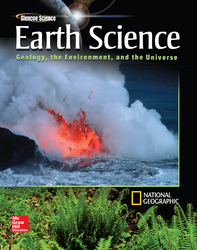1 A) topographic effects B) the tropics C) orographic lifting D) the polar zones 2 A) 30 years B) 10 years C) 30 months D) 1 year 3 A) sea breezes B) orographic lifting C) their proximity to large bodies of water D) the drop of temperature with altitude 4 A) tropics B) temperate region C) south pole D) north pole 5 A) an area where the climate is colder due to an increase in elevation B) a subtropical island C) an area where climate is warmer due to concrete and asphalt D) an island that is warmer than the surrounding ocean 6 A) mean monthly values of temperature and precipitation, and vegetation B) mean yearly values of temperature and precipitation only C) mean monthly values of temperature D) vegetation and precipitation 7 A) humid subtropical B) dry-summer subtropical C) tropical D) temperate 8 A) Earth's axis points straight up through the poles. B) They receive less solar radiation than other parts of Earth's surface. C) They always point away from the Sun. D) The snow cover reflects solar radiation and prevents warming. 9 <a onClick="window.open('/olcweb/cgi/pluginpop.cgi?it=gif::::/sites/dl/free/0078746361/561685/83_temp_ca_140c.gif','popWin', 'width=NaN,height=NaN,resizable,scrollbars');" href="#"><img valign="absmiddle" height="16" width="16" border="0" src="/olcweb/styles/shared/linkicons/image.gif"> (21.0K)</a> A) City Y has a higher average temperature. B) City X has consistent rainfall throughout the year. C) City Y has more mild weather. D) City X is in a very cold area. 10 A) Dopplar radar B) computer models C) infrared cameras D) barometers 11 A) gravity, Earth's rotation, temperature differences B) sunlight, rainfall patterns, climate C) seismic activity, elevation, humidity D) wind patterns, ocean currents, mountain ranges 12 A) absorb heat energy emitted from Earth's surface B) reflect heat that is emitted from Earth's surface C) encourage crops to grow earlier in the season D) enhance precipitation by encouraging cloud formation 13 A) oxygen B) nitrogen C) carbon dioxide D) methane 14 A) The Sun is closer to the equator than the poles. B) The equator receives more direct sunlight than the poles. C) There is more water at the equator, which absorbs more heat. D) Ice at the poles keeps the surface colder than the surface at the equator. 15 A) patterns of temperature changes in the deep waters of the Pacific Ocean B) patterns of surface temperatures in the Pacific Ocean and Atlantic Ocean C) patterns of surface temperature and air pressure over the Pacific ocean and the air above it D) patterns of water and air temperatures in the Arctic Ocean and Indian Ocean 16 A) global ice ages B) variations in global weather C) populations of insects worldwide D) types of crops developed worldwide 17 A) Much of the northwestern coast of South America experiences a cool, dry climate. B) Frequent and intense hurricanes develop in the Atlantic Ocean. C) Strong trade winds move water westward across the Pacific Ocean. D) Warm ocean current develops off the western coast of South America. 18 A) along the equator B) along the eastern coasts of continents C) on the leeward side of mountains D) on the windward side of mountains 19 A) time of year B) today's weather C) latitude D) longitude 20 A) common plants in the region B) mountains and prevailing winds C) wildlife populations D) human settlements





